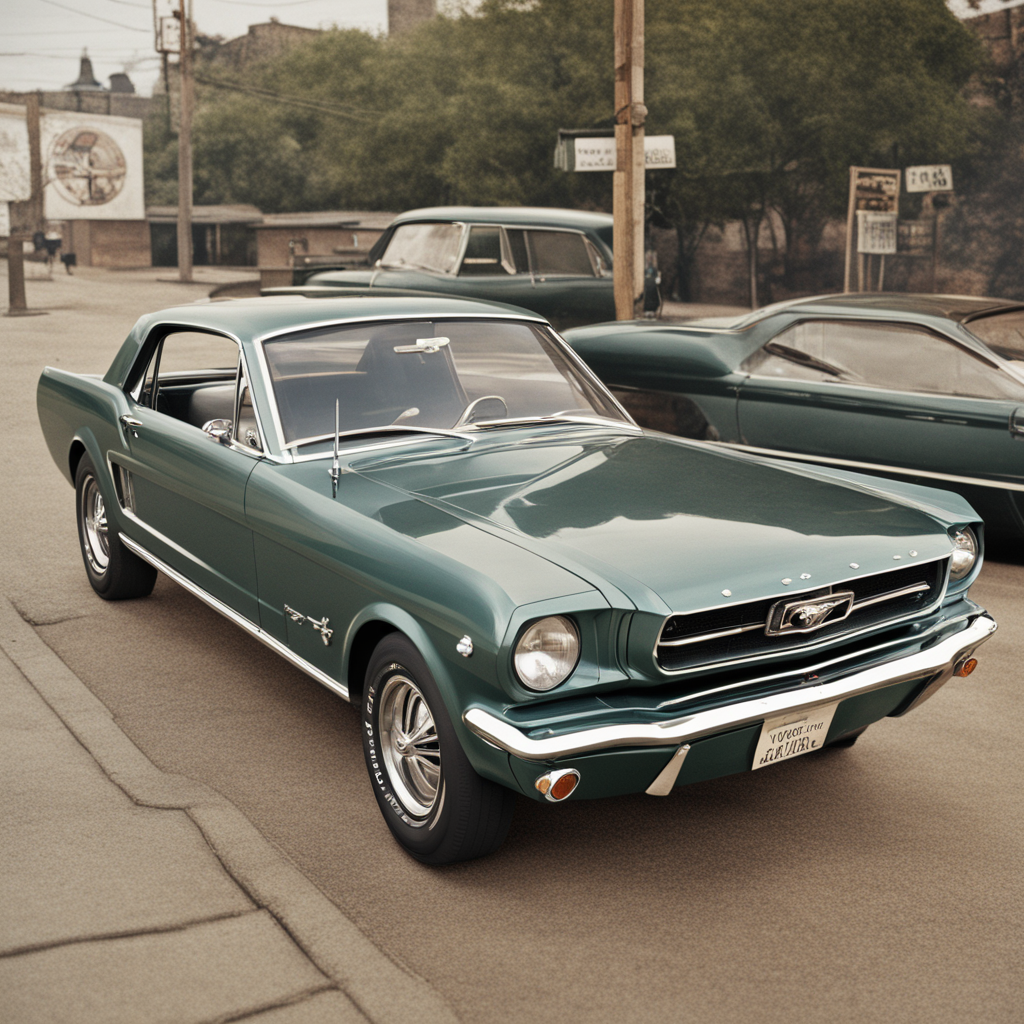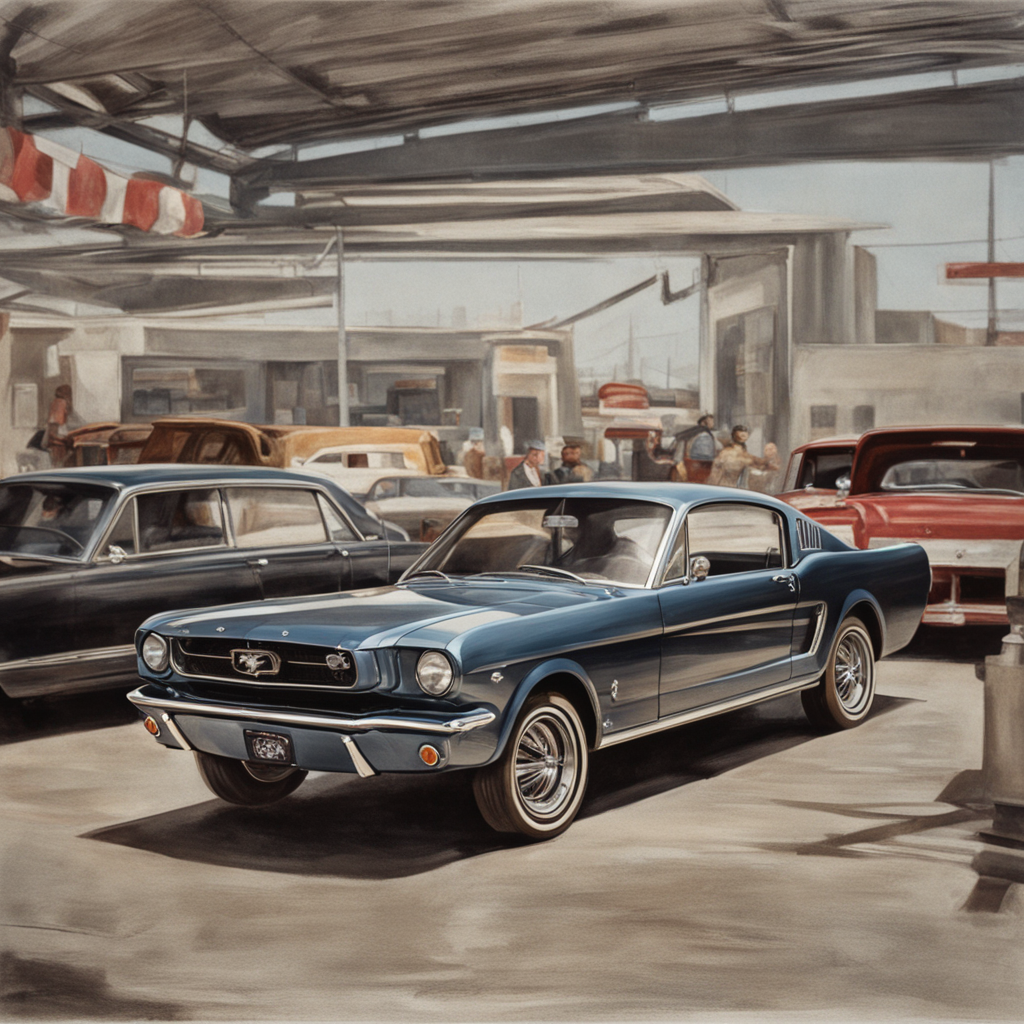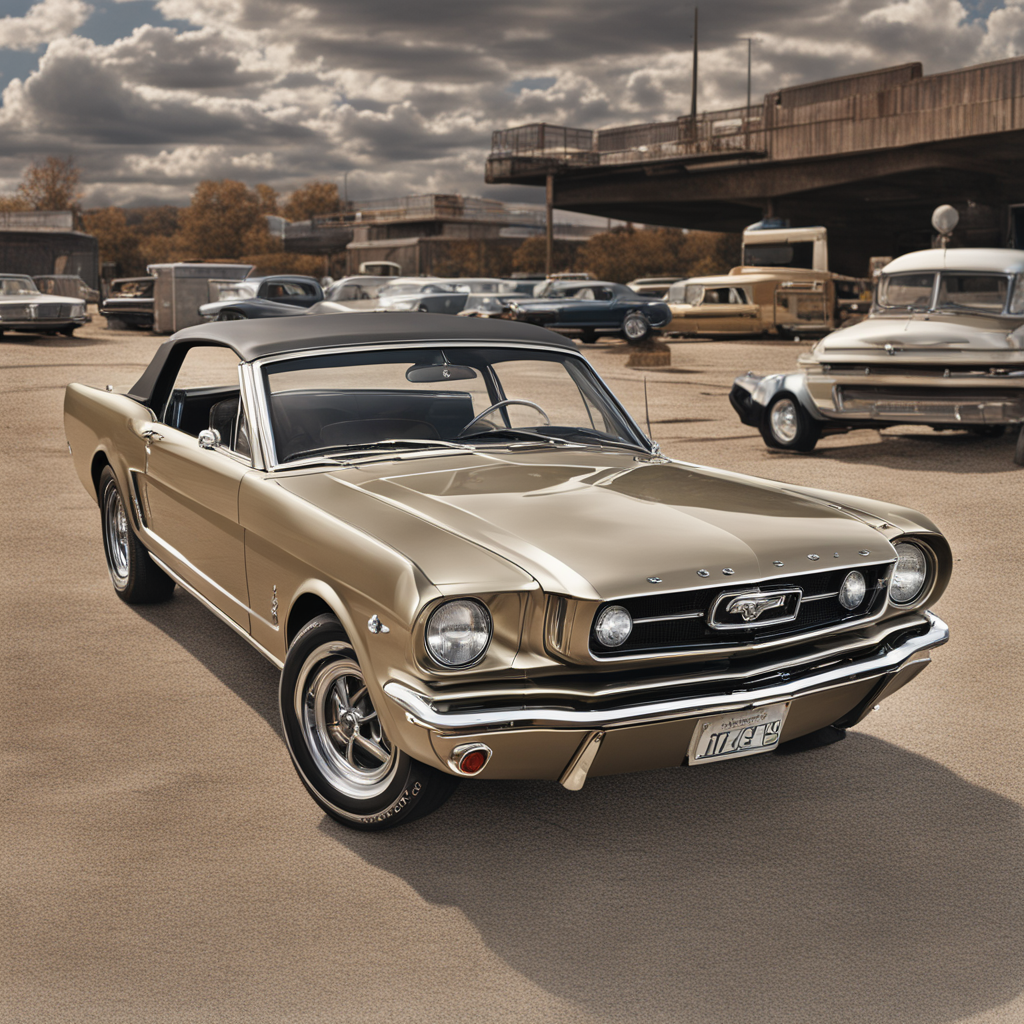The Birth of a Muscle Car Icon
In 1965, the Ford Mustang underwent significant changes, transforming it from a stylish pony car into a high-performance muscle machine. This article explores the significance and details of the 1966 …
Updated October 16, 2023
In 1965, the Ford Mustang underwent significant changes, transforming it from a stylish pony car into a high-performance muscle machine. This article explores the significance and details of the 1966 Ford Mustang.

Introduction
The 1966 Ford Mustang marked a turning point in its history. Building upon the success of previous years, Ford aimed to create a more powerful, aggressive, and desirable vehicle that would set new standards for the industry. The ‘66 Mustang achieved this goal, becoming an iconic representation of American muscle.
Brief History of the 1966 Ford Mustang
The first-generation Ford Mustang debuted in April 1964 as a 1965 model. Initially designed as a compact car with sporty styling, the Mustang became an overnight sensation due to its unique design, impressive performance, and affordability. The early years saw modest updates, but the 1966 model year introduced significant changes that cemented the Mustang’s status as a muscle car.
Significance of the 1966 Ford Mustang
The ‘66 Mustang is considered the birthplace of the modern muscle car era. Its new design, powerful engine options, and innovative features made it an instant hit with car enthusiasts. The ‘66 model year introduced the iconic fastback design, a bold new grille, and more aggressive styling cues that set it apart from its predecessors.
Design and Styling of 1966 Ford Mustang
The 1966 Ford Mustang received a significant facelift, featuring:
- A revised grille with horizontal bars
- Sweeping hood lines and a new front bumper design
- Angular fastback roofline (available on all models)
- A more aggressive stance due to the lower profile and wider track
Color Options and Trim Levels
The ‘66 Mustang offered six exterior colors:
- Wimbledon White
- Silver Mink Metallic
- Garnet Red Metallic
- Candy Apple Red
- Tropical Turquoise
- Ivy Green Metallic
Trim levels included:
- Base (standard)
- Deluxe (mid-range with additional features)
- GT (high-performance package)
Performance and Specifications
The ‘66 Mustang boasted impressive performance numbers thanks to its powerful engine options:
- 289 cubic-inch V8 producing 225 horsepower and 285 lb-ft of torque
- 390 cubic-inch V8 producing 265 horsepower and 405 lb-ft of torque
Transmission options included:
- 3-speed automatic with overdrive
- 4-speed manual (standard on GT models)
Engine Options for the 19-66 Ford Mustang
The ‘66 Mustang offered two main engine options:
- A 289 cubic-inch V8 (C-code) producing 225 horsepower and 285 lb-ft of torque
- A 390 cubic-inch V8 (F-code) producing 265 horsepower and 405 lb-ft of torque
Horsepower and Torque Ratings for the 19-66 Ford Mustang
The ‘66 Mustang’s engine options boasted:

- 289 cubic-inch V8: 225 horsepower, 285 lb-ft of torque
- 390 cubic-inch V8: 265 horsepower, 405 lb-ft of torque
Transmission Options
Transmission choices included:
- 3-speed automatic with overdrive (standard on all models)
- 4-speed manual transmission (standard on GT models)
Variants and Special Editions
The ‘66 Mustang saw the introduction of the GT Equipment Package, which added performance-oriented features like a thicker anti-roll bar, heavy-duty suspension components, and a limited-slip differential.
Fastback, Convertible, and Coupe body styles were available, each with its unique characteristics:
- Fastback: Sleek, sporty design with a sloping roofline
- Convertible: Top-down driving experience with a power-operated soft-top
- Coupe: Traditional hardtop design
Impact on the Automotive Industry
The ‘66 Mustang revolutionized the industry by introducing new performance-oriented features, aggressive styling cues, and a focus on high-performance capabilities. This led to a surge in popularity for muscle cars and paved the way for future generations of high-performance vehicles.
Sales Figures and Popularity
The ‘66 Mustang achieved impressive sales figures:
- Over 417,000 units sold worldwide
- Top-selling car in the United States for that year
Influence on Competitor Models
The ‘66 Mustang’s influence extended beyond Ford; competitors like Chevrolet (Camaro) and Pontiac (Firebird) began to develop their own muscle cars.
Collectibility and Value of 19-66 Ford Mustang
As a collector’s item, the ‘66 Mustang is highly sought after:
- Condition: The more original and well-maintained the car, the higher its value
- Rarity: Limited-production models like the GT Package or special edition colors increase desirability
Current market values for various conditions and variants include:
- Base model (average condition): $15,000 - $25,000
- Deluxe model (average condition): $20,000 - $35,000
- GT package (good condition): $30,000 - $50,000
- Limited-edition colors or special editions: $40,000 - $80,000
Buying Guide
When purchasing a ‘66 Mustang:
- Inspect the car thoroughly for signs of wear and damage
- Check for any major repairs or modifications
- Verify the originality of the engine, transmission, and other components
- Research the market value to ensure a fair price
Conclusion: The 1966 Ford Mustang is an iconic representation of American muscle, with its bold styling, impressive performance capabilities, and innovative features. As a collector’s item, it has gained immense popularity and desirability. Whether you’re looking for a reliable daily driver or a prized possession, the ‘66 Mustang is sure to impress.

